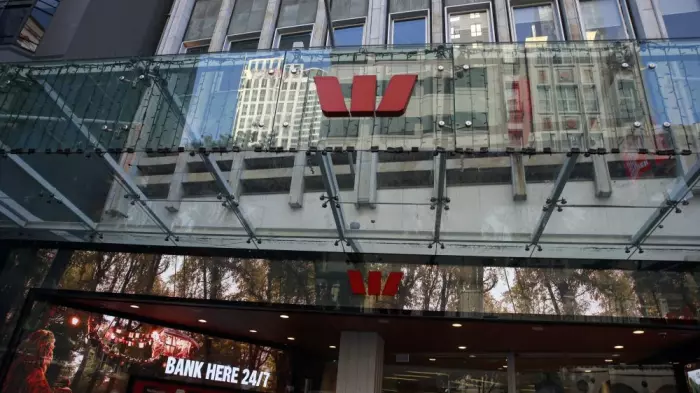POT Financial Results for the Year to 30 June 2024
FLLYR
Fri, Aug 23 2024 08:31 am
Port of Tauranga shows resilience amid economic and supply chain challenges
Financial results for the year ended 30 June 2024
Port of Tauranga Limited (NZX:POT) today reported improved cargo volumes in the second half of the financial year, as New Zealand’s largest port again proved its resilience in the face of economic headwinds.
Amid significant domestic and international supply chain challenges, total cargo volumes for the year decreased 4.2% to 23.6 million tonnes. Container volumes for the year decreased 2.5% to 1,147,350 TEUs.
The second half of the financial year saw significantly higher volumes than the first half, with container numbers increasing 13.7% and total trade growing 3.3% between the two six-month periods.
The company saw an underlying Group profit of $102.7 million, a 12.8% decrease compared with $117.1 million the previous year. The reported Group Net Profit After Tax of $90.8 million includes a one-off deferred tax expense of $11.9 million due to a change in tax legislation.
An intense focus on customer service has seen improved efficiency at Port of Tauranga despite ongoing challenges elsewhere in the domestic and international supply chain.
Highlights and challenges
For the year ended 30 June 2024 (compared with the previous financial year):
• Group Net Profit After Tax of $90.8 million
• Underlying Group profit of $102.7 million
• Total trade 23.6 million tonnes (a 4.2% decrease from 24.7 million tonnes)
• Container volumes of 1.15 million TEUs (a 2.5% decrease from 1.18 million)
• Revenue $417.4 million (a 0.8% decrease from $420.9 million)
• Imports 7.8 million tonnes (a 13.4% decrease)
• Exports 15.8 million tonnes (a 0.9% increase)
• Ship visits 1,427 (compared with 1,432)
• Final dividend 8.7 cents per share (compared with 8.8 cents per share in 2023)
• Total ordinary dividend 14.7 cents per share (compared with 15.6 cents per share in 2023)
Port of Tauranga Chair, Julia Hoare, said the result was pleasing after a difficult start to the financial year. Ongoing inflationary pressures and low consumer confidence had put pressure on imported cargo volumes.
“We have seen a lot of volatility in demand, with big increases in log and kiwifruit exports at the same time as significant decreases in imports,” she said.
Although the Port is still contending with shipping schedule unreliability, outside of our control, the container terminal has continued to improve both safety performance and productivity levels. The average net crane rate for the year (container moves per hour per crane) increased 7.9% to 30.1.
“Our team and our service partners have done an outstanding job in ensuring Port of Tauranga is New Zealand’s most efficient port,” said Ms Hoare.
“Port productivity is a national issue and is of great concern to importers and exporters seeking efficient access to international markets. Currently, less than 30% of vessels arriving at Tauranga as a last New Zealand port are on time.”
Port of Tauranga continues to invest in critical infrastructure to deliver an effective supply chain for New Zealand.
The Ruakura Inland Port in Hamilton, a joint venture with Tainui Group Holdings, is celebrating its first anniversary. Trains running between Port of Tauranga and MetroPort Auckland now call daily at the inland port.
Port of Tauranga has taken delivery of a new container crane and an additional four hybrid straddle carriers, as it readies the country’s most efficient port for the next stage of growth in a lower carbon future.
Port of Tauranga Chief Executive, Leonard Sampson, said the current economic conditions and operating environment continued to be complex and challenging.
“I’m pleased that our scale and resilience has again come to the fore in the year-end results,” he said.
Stella Passage project update
The Environment Court has issued an interim decision granting resource consent for part of the Port’s planned Stella Passage project.
The project involves extending wharves at both the container terminal at Sulphur Point and the Mount Maunganui wharves. The developments are contained within the existing port footprint.
The consent for a 285-metre extension at Sulphur Point, the most urgent, was approved subject to further matters being addressed to the satisfaction of the Court, including the provision of further environmental evidence and engagement with iwi and hapū parties.
The Port is committed to working with iwi and hapū and addressing the Court’s directions. Progress was reported to the Court at the end of June, and the Court has recently appointed an independent facilitator to support the parties involved.
To ensure construction can commence as soon as possible, Port of Tauranga has applied for the entirety of the Stella Passage project to be included in the Government’s fast track consenting legislation. We are currently awaiting the outcome of select committee deliberations on the bill. No matter which path the consent applications ultimately follow, the Port remains committed to the conditions and mitigations it has proposed to the Court.
Financial results for the year ended 30 June 2024
Revenue decreased 0.8% to $417.4 million. EBITDA (earnings before interest, tax, depreciation, and amortisation) decreased 7.0% to $203.7 million. Operating costs increased 3.8% to $218.6 million.
Subsidiary and Associate Company earnings decreased 29.3% compared with the previous year. Profitability at Northport, PrimePort Timaru, Timaru Container Terminal and Coda Group was affected by reduced cargo volumes due to economic conditions. This was offset by strong performances from Quality Marshalling and PortConnect.
Port of Tauranga’s Board of Directors has declared a final dividend of 8.7 cents per share to bring the total dividend to 14.7 cents per share. The dividend reflects improved trading conditions in the second half of the financial year, the company’s strong balance sheet, the return of capital from joint ventures, and delayed capital expenditure.
Cargo trends in 2024
Imports decreased 13.3% in volume overall to 7.8 million tonnes. Exports increased 0.9% to 15.8 million tonnes, largely due to increases in log, kiwifruit, meat, and pulp exports.
Log exports increased 7.5% to 6.7 million tonnes, the second highest year on record, largely due to a one million tonne boost to volumes post-Cyclone Gabrielle. A large number of trees in the Central North Island forests were damaged in the severe weather event and had to be harvested and exported earlier than planned.
Direct dairy exports decreased 3.4% in volume and transhipped dairy volumes were down significantly. Total meat exports increased 19.7% in volume reflecting strong United States demand and trans-Tasman transhipment via Tauranga.
Direct kiwifruit export volumes increased 8.5% compared with the previous year.
Commodity price pressure saw dairy inputs reduce, with imported fertiliser volumes decreasing 16.7%, while stock feed imports decreased 17.2% in volume. Imported oil products remained steady, decreasing 0.8% in volume.
Steel exports saw significant increases in volume.
Transhipment decreased 12.1% in volume due to changes in coastal shipping services.
A total of 109 cruise ships visited over the summer, close to the record of 116 visits prior to the Covid pandemic. However, this is forecast to drop to approximately 91 visits next year due to a number of factors affecting all New Zealand ports.
Safety performance
Improved productivity has not been at the expense of safety performance. Our safety record improved significantly for combined Port of Tauranga employees and contractors. The Total Recordable Injury Frequency Rate (TRIFR) reduced 36.2% to 13.2 incidents per one million hours worked.
The focus in the past year has been on increasing health and safety training, with completed training courses more than tripling to 2,491, compared with the previous year.
Port of Tauranga has also introduced a new recognition programme to acknowledge individuals’ and teams’ contribution to safety.
Environmental performance
Port of Tauranga takes its social licence seriously and is committed to continuous improvement in its environmental performance. The Port undertakes an extensive air and water quality monitoring programme. There were no exceedances of national standards or resource consent conditions during the year.
Dust mitigation and management efforts, including increased sweeping, wind fences and improved cargo handling, have resulted in a significant improvement in air quality since 2019.
The use of methyl bromide for cargo fumigations has long been of concern to local residents. Since early 2022, methyl bromide use has dropped to less than 25,000 kilograms per year (down 92% from the peak in 2013) thanks to greater restrictions on its use, including recapture technology, and increased incentives for de-barking of export logs prior to arrival at the port.
Total greenhouse gas emissions (Scope 1, 2 and 3), verified by Toitū, reduced 13.5% compared with the previous year. Total emissions per cargo tonne reduced 9.1%. We are currently finalising our Climate-related Disclosures Report and will report on our Scope 1 and 2 inventory in accordance with the new standards.
Outlook
Congestion in Asia caused by ships avoiding the Red Sea has worsened, with delays plaguing ports in Singapore, Malaysia, China, Sri Lanka, and United Arab Emirates. The threat of escalating conflict and global economic conditions are also influencing cargo volumes and costs globally.
We expect export log volumes to return to pre-2023 levels due to lower international prices. The domestic economy is also likely to have a continuing effect on imported cargo volumes. We have recently increased the weekly train programme between Tauranga and Auckland to 54 trains per week, up from 48, but still lower than the 92 trains per week at the end of last financial year. While increased rail costs have proved challenging, we are working with KiwiRail to ensure the rail option remains well-utilised and viable for our import customers.
Port of Tauranga is prepared to respond to New Zealand’s energy crisis, including the import of alternative fuel sources such as coal. The Port has a purpose-built, enclosed coal handling facility that is connected via rail to the Genesis Energy power station at Huntly, avoiding the need to transfer imported coal via truck from other ports.
Despite the many challenges, Port of Tauranga’s Board and management remain confident of its resilience into the future due to the Port’s operational strength, diverse cargoes, and multiple income streams.
Port of Tauranga will provide guidance for the 2025 financial year at the Annual Shareholders’ Meeting on 25 October 2024.
For further details, contact:
Rochelle Lockley
GM Communications
Ph 021 865 884 / [email protected]




